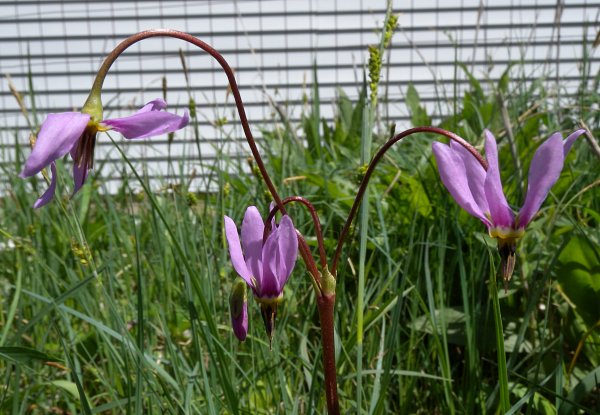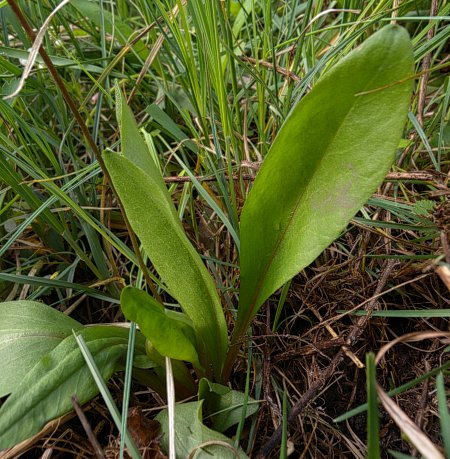Description: This perennial wildflower consists of a low rosette of basal leaves and a flowering stalk of flowers about ½–1½' tall. The basal leaves are up to 6" long and 2½" across; they are ovate-oblong or obovate, medium green, hairless, and smooth along their margins. The erect flowering stalk is hairless and devoid of leaves; at its apex there is an umbel of 3-20 flowers. The flowers nod downward from their drooping pedicels. Each flower is about ¾" long, consisting of a corolla with 5 oblong lobes, a light green calyx with 5 triangular teeth, and 5 stamens that are appressed together around a single slender style. The corolla is usually rosy pink, although sometimes it is a lighter shade of pink. The lobes of the corolla are turned inside-out, fully exposing the reproductive organs (which are pointed downward). Near its base, the corolla has patches of yellow and white. The anthers of the stamens are yellowish orange. The blooming period occurs during the late spring for about 2 weeks. Afterwards, the pedicels of the flowers turn upward and the developing seed capsules are held erect. At maturity, the papery walls of the seed capsules become light brown. Each seed capsule contains many tiny seeds. The root system consists of a crown of fibrous roots. The foliage withers away by mid-summer. This wildflower reproduces by reseeding itself.

Cultivation:
The preference is full or partial sun during the period of vegetative
growth and development. This occurs during the spring and it is quite
rapid. At this time, ample moisture and cool to moderate temperatures
are required. This wildflower can adapt to a loamy garden soil, but it
often occurs on rocky slopes in its native habitat. Some protection
from the hot afternoon sun is desirable, but not required if there is
ample moisture.
Range & Habitat:
Amethyst Shooting Star is found in only a few counties in NW and
west-central Illinois (see Distribution
Map); it is native and uncommon. Habitats include thinly
wooded bluffs,
rocky cliffs, and sheltered areas of upland prairies where moisture
tends to accumulate. In Illinois, this wildflower is found in hilly
areas along the Illinois and Mississippi Rivers. In other states, it is
often found in mountainous areas.
Faunal Associations:
The flowers are visited by bumblebees and other bees for their pollen.
Through the rapid vibration of their abdominal muscles, bumblebee
visitors engage in "buzz pollination," which induces the flower to
release its pollen. The low foliage is probably edible to mammalian
herbivores, but it is rarely eaten because of its inconspicuous and
ephemeral nature.

Comments: This is a little jewel of a plant. It closely resembles the more common Dodecatheon meadia (Shooting Star), but the flowers of Amethyst Shooting Star are usually a deeper shade of pink. In general, Amethyst Shooting Star is slightly smaller in size than Shooting Star, and the flowering stalk of each plant has a tendency to produce fewer flowers (less than 20); sometimes, the flowering stalk of a robust Shooting Star produces substantially more than 20 flowers. The most critical difference between these two plants, however, consists of the characteristics of their seed capsules: At maturity, the seed capsules of Amethyst Shooting Star are light brown and thin-walled, while the seed capsules of Shooting Star are dark brown and thick-walled. The basal leaves of these two species are very similar.